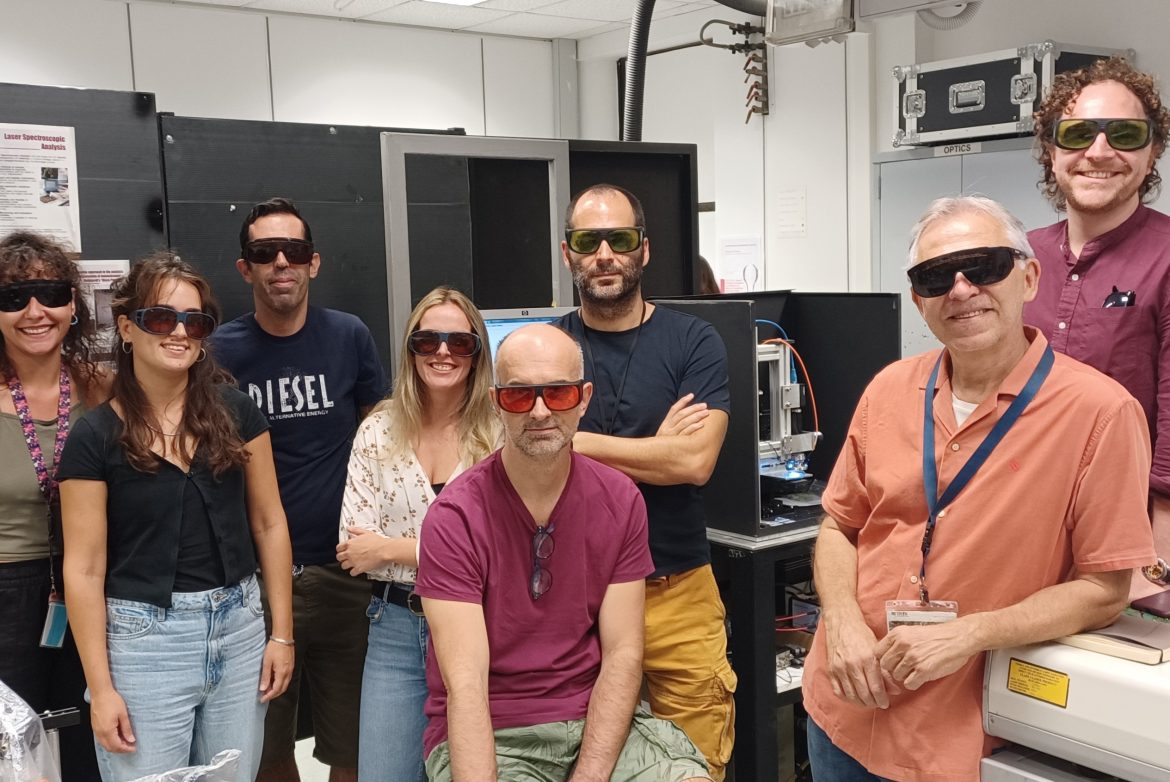Starting the OtoLIBS Project
The team was working with the LIBS system at the IESL lab. (left to right: Maria Eleni Konstantinou, Danai Theodoraki, Aggelos Philippidis, Rosa Arniz-Mateos, Panagiotis Siozos, Victor Piñón, Demetrios Anglos, Niklas Hausmann).
The OtoLIBS project seeks to improve our understanding of fish populations, their migration patterns, and environmental conditions by utilizing Laser-Induced Breakdown Spectroscopy (LIBS). To achieve this, the project focuses on analyzing both modern and archaeological otolith samples—commonly known as “earstones.” These calcium carbonate structures found in the inner ear of fish play crucial roles in functions such as balance and predator avoidance.
Side view of the system analysing a modern flounder otolith sample.
The detection of elements such as Sr, Ba, Mn, Zn, and Mg, whose concentrations are influenced by environmental conditions, as well as other elements that could help distinguish otolith fingerprints associated with habitat connectivity, migratory patterns, and physiological variations among fish species.
This is an example of the results obtained so far of Sr/Ca ratios from a modern salmon otolith by LA-ICP-MS (Laser Ablation Inductively Coupled Plasma Mass Spectrometry) and LIBS.

Salmon showing Sr/Ca changes produced by LA-ICP-MS (a) and LIBS (b).
We are excited about the potential insights this first approach may provide into the ecological dynamics of fish populations!
Acknowledgements
The project is funded by the Programme for the Promotion of the Exchange and Scientific Co-operation between Greece and Germany IKYDA 2024. We would like to thank our collaborators: Malte Willmes (Norwegian Institute for Nature Research, Norway), Anna M. Sturrock (School of Life Sciences, United Kingdom) and Rachel C. Johnson (National Marine Fisheries Service, USA) for their contributions to the development of the LIBS method for otolith analyses.



